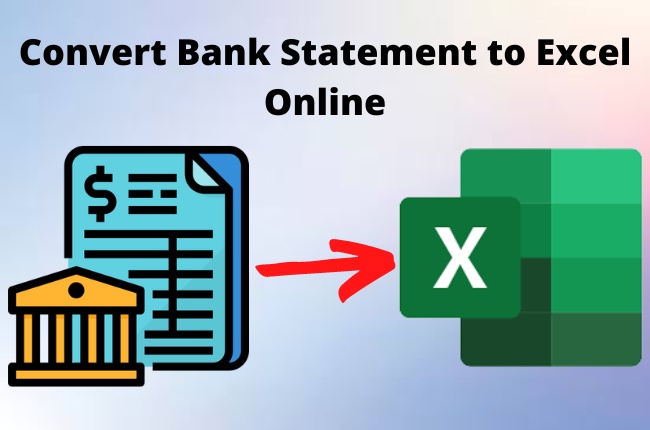In the fast-paced world of financial management, the need for tools that streamline data processing and analysis is paramount. Bank statement converters to Excel have emerged as invaluable solutions, allowing individuals and businesses to efficiently transform complex financial data from diverse formats into a more versatile and user-friendly Excel format. This article explores the significance of bank statement conversion tool, shedding light on their functionalities, benefits, and considerations for optimal use.
Understanding Bank Statement Converter to Excel
A bank statement converter to Excel is a software tool designed to simplify the process of converting bank statements from various formats, such as PDFs or CSV files, into Microsoft Excel. This conversion is particularly valuable for users who require a more dynamic and customizable platform to analyze, manipulate, and manage their financial data. The bank statement converter automates the extraction and organization of data, saving time and reducing the risk of errors associated with manual entry.
Key Features of Bank Statement Converter to Excel
- Format Conversion:
- The core function of a bank statement converter is to convert statements from their original format into Excel. This can include PDF to Excel, CSV to Excel, or other format conversions, depending on the source document.
- Data Extraction and Mapping:
- Bank statement converters utilize advanced algorithms to accurately extract key financial data such as transaction dates, descriptions, amounts, and account balances. The tool often maps this information into predefined columns in the Excel spreadsheet.
- Accuracy and Reconciliation:
- Accuracy is paramount in financial transactions. Bank statement converters include features that aid in reconciling transactions, ensuring that the converted data aligns with the original statement and any discrepancies are flagged for review.
- Categorization and Tagging:
- Some converters offer categorization and tagging functionalities, automatically assigning transactions to specific expense categories. This feature enhances the organization of financial data for more meaningful analysis.
- Customization Options:
- Users often have specific preferences regarding how they want their financial data presented. Bank statement converters may include customization options, allowing users to define the structure and layout of the Excel spreadsheet according to their needs.
Benefits of Using Bank Statement Converter to Excel
- Time Efficiency:
- Automating the conversion process significantly reduces the time and effort required to manually input data into Excel. This time-saving benefit is particularly crucial for individuals and businesses dealing with a high volume of financial transactions.
- Error Reduction:
- Manual data entry is prone to errors. Bank statement converters mitigate this risk, ensuring that data is accurately extracted and mapped, leading to more reliable financial records.
- Compatibility with Financial Software:
- Excel is a widely compatible platform, and converting bank statements to Excel ensures seamless integration with a variety of financial and accounting software. This compatibility streamlines the financial management process.
- Enhanced Data Analysis:
- Excel's powerful data analysis tools enable users to create charts, graphs, and pivot tables for in-depth financial analysis. The structured and organized data from the converter facilitates meaningful insights into spending patterns and financial trends.
- Regulatory Compliance:
- For businesses, compliance with financial regulations is crucial. Bank statement converters contribute to regulatory compliance by ensuring accurate and properly formatted financial records.
Challenges and Considerations
- Security Considerations:
- Handling sensitive financial data requires stringent security measures. Users should select bank statement converters that adhere to industry-standard security protocols to safeguard confidential information.
- Data Verification:
- While bank statement converters strive for accuracy, users should verify the converted data to ensure its correctness. This step is crucial in maintaining the integrity of financial records.
- Compatibility with Bank Formats:
- Different banks may provide statements in varying formats. Users should choose a bank statement converter that supports the formats used by their financial institutions.
- Cost Considerations:
- Some bank statement converters may come with a cost. Users should evaluate their specific needs and budget constraints when selecting a converter.
Conclusion
Bank statement converters to Excel represent a significant advancement in financial data management. Their ability to automate the conversion and organization of bank statements not only saves time and reduces errors but also empowers users with valuable insights into their financial activities. As technology continues to evolve, bank statement converters to Excel are likely to play an increasingly pivotal role in the financial landscape, offering enhanced efficiency and convenience for businesses and individuals alike.


No comments yet